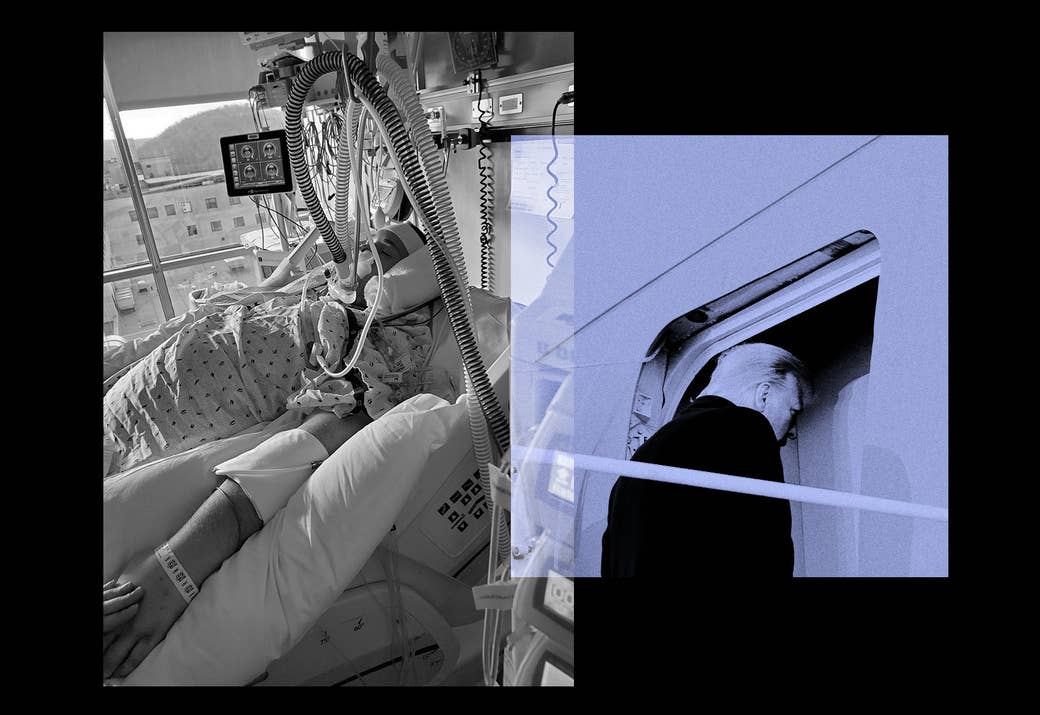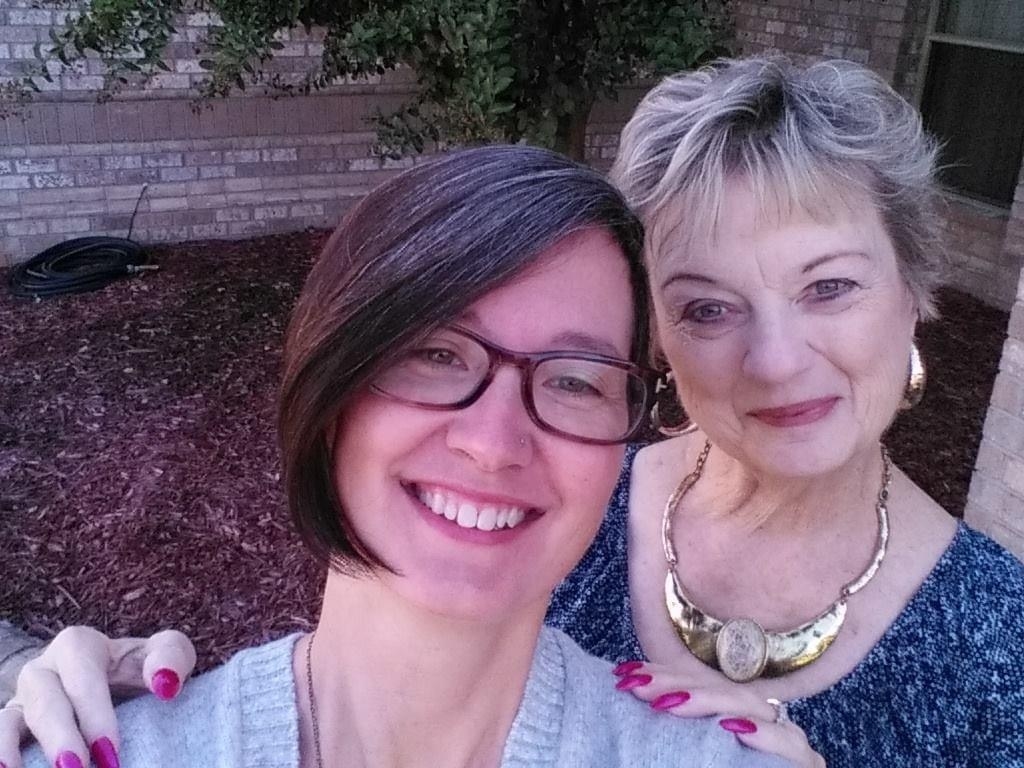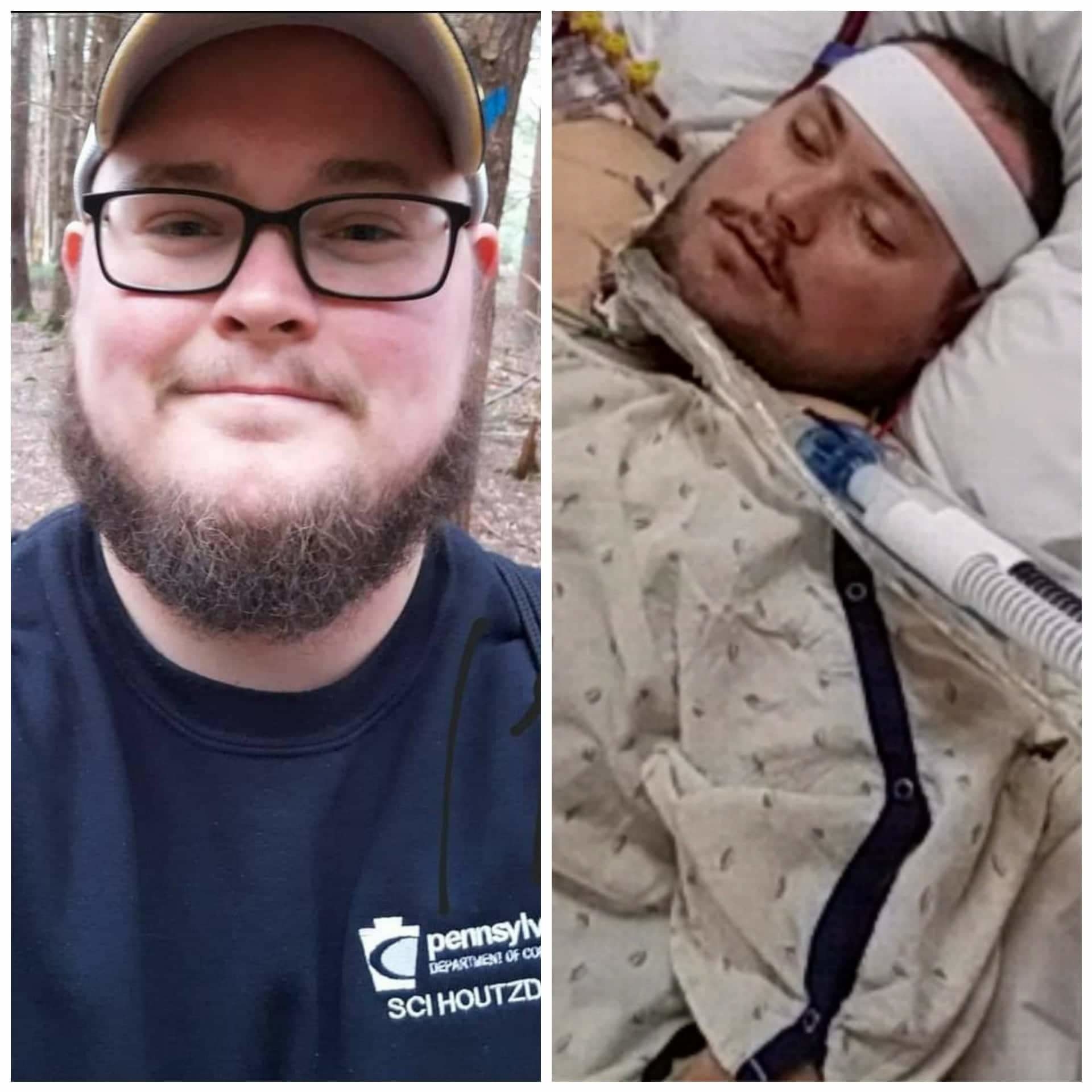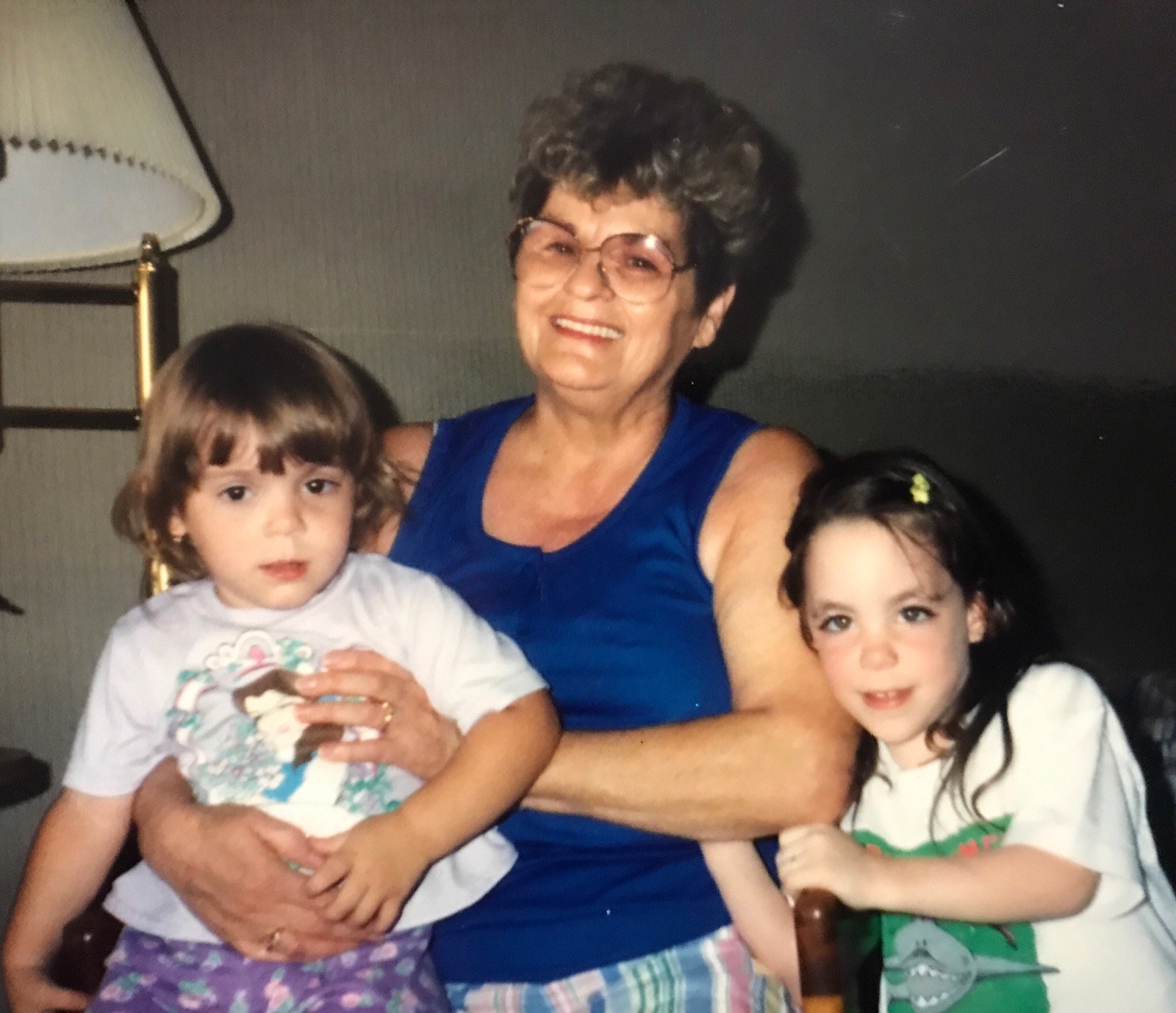
The journalists at BuzzFeed News are proud to bring you trustworthy and relevant reporting about the coronavirus. To help keep this news free, become a member and sign up for our newsletter, Incoming.
At 8:15 a.m. on Jan. 20, Donald Trump departed the White House for the last time as president, boarding the Marine One helicopter to begin his journey to Mar-a-Lago.
At that exact same moment, Kimberly Brill was in Los Angeles on her 15th straight hour of a FaceTime call, where she was saying her final goodbyes to her mom, Jan Hammac, who was in a hospital bed across the country in Pensacola, Florida, dying of COVID-19.
At 8:28 a.m, Trump and his wife landed at Joint Base Andrews in Maryland where Air Force One and a small crowd of his family and supporters were waiting as Laura Branigan’s disco song “Gloria” blared on loudspeakers.
Two minutes later, at 8:30 a.m., Hammac took her last breaths. She was 75.
“Now, I am one of many who lost their mother too soon to COVID,” Brill, 50, told BuzzFeed News. “It’s senseless, awful, and frightening.”
As she grieves, Brill has agonized over how and where her mother may have caught the coronavirus, but mostly she has wondered if the outgoing president had handled the pandemic differently, with less politics and divisiveness, whether more of his supporters, which included her mother, might still be alive.
“When she passed on the morning of the 20th, I thought it was an unbelievable irony,” Brill added. “Whereas there were members of my family that viewed it as her and Trump leaving their places together.”
Hammac was one of around 3,000 Americans to die from the coronavirus in the final 24 hours of the Trump presidency — a grim capstone to the very issue his own campaign team later privately said had cost Trump the election. As president, Trump repeatedly downplayed the severity of COVID-19, mocked mask-wearing, attacked Anthony Fauci, spread cruel conspiracy theories about healthcare workers, pontificated about injecting bleach and sunlight as a cure, and held campaign rallies believed to have caused 30,000 COVID cases and 700 deaths (including, most likely, Herman Cain’s). More than 400,000 Americans died — a number higher than any other country — as the pandemic spiraled out of control on his watch.
But the death tolls don’t convey the human faces of those lost, nor the pain of those left behind. Trump may have gone, but the anger for many remains. Death defined his presidency until the very end.
“I thought, Where is Trump right now when you’re dying?” said Cindy Catalano, a 53-year-old Pittsburgh nurse, whose son Kyle Dixon, 27, died of COVID-19 on the morning of Jan. 20. “The whole administration, where were they when all these people were dying? Now you are dying, and the person you supported is not anywhere here for you.”

When Brill thinks about her mother, she can’t help but laugh between the tears, remembering the hilarious and lively woman who raised her. One time, when Brill and her friends were teenagers, Hammac drove them from their hometown of Pensacola all the way to Birmingham, Alabama, just to go to an Amy Grant concert. “She was always up for adventure and fun,” said Brill.
Music and Christianity were two of Hammac’s biggest guiding lights in life. The daughter of a minister, she learned to play the organ at a young age and worked as an organist at her church until the end of her life.
Both of Brill’s parents contracted COVID-19 around the same time in early January, but her dad recovered fairly quickly. It wasn’t until her father called on Jan. 17 to say Hammac had been running an extremely high fever all week that it became clear it was not “nothing more than a cold,” as Hammac previously said when her husband went through it.
“She always tried to protect me,” said Brill. “I don’t think she wanted me to worry.”
When Hammac was taken to the hospital that day, Brill said she grappled with whether or not to fly back to Florida to be with her mom. But with COVID-19 case rates so high in California and travel restrictions in place, she decided to stay put so as not to potentially spread the virus further. “I had a lot of people questioning when I was coming home, and surely I was coming home,” Brill said. “So there was a tremendous amount of guilt in considering not going home.”
In the end, Brill’s dad — who was allowed into Hammac’s hospital room to be with her in her final hours — FaceTimed Brill so she could say goodbye. They had hoped they might have a few lucid moments to speak to Hammac after she was taken off the ventilator, but she immediately slipped into unconsciousness and did not wake up again.
Brill had looked forward to Jan. 20 for a long time, excited to see President Joe Biden and Vice President Kamala Harris sworn into office. But after her mom died that morning, the inauguration barely crossed her mind.
“It was going to be such a phenomenal day,” she said. “But the grief of that day was much more a part of my life than the actual inauguration.”

It was 27 years ago that Catalano, the Pittsburgh nurse, nearly lost her son for the first time. Dixon was born premature and with a protein allergy, and he was so underweight they thought he might die. But the newborn survived, and by the time he was a toddler, he was already wowing his family with the strength he would go on to use as a high school wrestling star.
“At 2 years old, we used to call him Bamm-Bamm,” said Catalano. “He would lift up the couch for me to vacuum under. There’s nothing my son could not do if he put his mind to it.”
Dixon loved camping and hunting with his friends in Lanse, the rural Pennsylvania town where he lived, about a two-and-a-half-hour drive from Pittsburgh. But despite his tough-guy exterior, he was a big softy, his mom said. He was full of love for his family and friends, and much more sentimental than he let on. When looking through his things after he died, the family found he’d saved his boutonnière from prom and many things from his Christmas stockings over the years.
When Dixon started feeling like he was getting a bad cold in early December, he began isolating immediately. Soon after, he tested positive for COVID-19 and began feeling significantly worse. His fever spiked to 106.5 degrees at one point, and he was taken to the hospital on Dec. 16 when he started having serious trouble breathing.
Dixon, who worked as a corrections officer, wasn’t the only one to contract the virus at his prison. Several colleagues had already tested positive when he started feeling sick. When the first inmate died there on Jan. 13, another 39 prisoners were also sick, as were 29 staffers — including Dixon, who by then was on a ventilator.
Dixon had been skeptical the virus was even real until he caught it. As a nurse, this was a source of frustration for Catalano, but she was relieved her son still wore a mask — just in case. “He didn’t believe it, but he wasn’t willing to risk it, if that makes any sense,” she said.
Catching COVID-19 was a major wake-up call for Dixon, his mother said. “When he got sick...he goes, ‘Mom this is not fake, this is real.’ And I said ‘Yes, sweetheart, I know that it is,’” said Catalano. “He learned a very hard lesson.”
Tyler Posteraro told BuzzFeed News that Dixon, his best friend, was endlessly selfless. “He was the most loving person I’ve ever known,” said Posteraro. Which is why knowing his friend was so sick, and being helpless to stop it, felt excruciating for Posteraro. “I know he would move mountains for me, and I could do nothing,” he said.
It had felt like a miracle when Catalano’s newborn son beat the odds and survived 27 years before, but at 5 a.m. on Jan. 20, Dixon died in his hospital bed with her by his side. “I’m the one who brought him into this world, but I was not supposed to be there when he went out,” she said.
Catalano hopes Dixon’s death helps other COVID-19 skeptics wake up and realize how serious the virus is. She wants people to look at the photos of her son — not just the happy ones, but the ones where he’s dying in the hospital — to see what COVID really does to a person.
“Just showing these beautiful pictures of who the patient used to be may not be enough shock value,” she said. “Maybe they need to see them bleeding out from the nose like my son.”
Jan. 20 was a time of transition and change for the country, but for Catalano too. Weeks after her son’s death, she describes the feelings she’s experiencing as something more than grief — she feels like her life is separated into a “before” and “after.” She’s constantly finding new things that will never be the same without her son. Recently, she wrote a thank-you note and realized she could no longer sign her son’s name along with her three daughters’. She thinks about the Christmas stocking they’ll never fill again. “You just have to just refocus your whole life and try to figure out how to live without them,” she said. “It’s a whole new world, and I hate it.”

Zebe French, 87, was in a nursing home in Jacksonville, Florida, when she died of the virus at 4:30 a.m. on Jan. 20. In some ways, her family feels a sense of relief — French had severe dementia, and they are grateful she is no longer suffering — but this was never the way they imagined saying goodbye: unable to be with her in her final moments, prevented from mourning together or holding a funeral worthy of her full life.
French’s daughter, Cathy Russell, had spent years trying to make up for lost time with her mom. Throughout Russell’s childhood, French had alcoholism, but in her sixties, at her daughter’s encouragement, French went to a rehabilitation program. She got sober and stayed that way for the rest of her life, and it transformed their relationship.
“I, as an adult, felt like I had my mother back,” said Russell. “It was just a great feeling, for that sobriety to be that long in her life and my life at the end. It made us very, very close and appreciate one another.”
After everything they went through as mother and daughter, not being able to be together at the end of French’s life has deepened her grief. “When you can’t just crawl up in the bed with them and hug them and let them know you’re there through every step...it’s just heartbreaking,” she said. “I think it’d not be so hard on me if I’d been able to say goodbye to her.”
Russell’s daughter, Annie Siemens, had previously looked forward to Jan. 20 as the day she and her two young daughters, aged 1 and 2 1/2, would watch the first woman vice president be sworn into office. But while sitting in front of their TV to watch the historic event from their home in Coeur d'Alene, Idaho, she received the news her grandma had died earlier that morning.
“One moment I’m watching the inauguration, and it’s really exciting, and then I’m grieving a moment later,” Siemens said. “It’s been this really rapid back-and-forth.”
Siemens said she had started grieving when she first found out her grandma had contracted COVID-19, knowing she would probably not survive. But that knowledge hasn’t soothed the heartache of the things you miss out on when a loved one dies due to a global pandemic; French never got the chance to meet Siemens’ youngest daughter, with whom she shares a middle name: Lee.
Her children are still too young to comprehend French’s death, much less that she died of a virus that has ended so many more lives in just one year.
With a new president in office, Siemens feels a glimmer of hope that soon, the country will no longer be wracked with so much death and fear and sadness. But one day, she knows that she will have to teach her daughters about how their great-grandma, and so many other people, were lost.
“My husband and I will find a way to tell this story to our girls,” she said, “and [we’ll] talk about loving people and safety and doing the right thing.”

About a week after Jan Hammac’s death, Kimberly Brill finally sought out video clips of the inauguration she’d been so excited for and that her mother had dreaded. She was particularly moved by the COVID-19 victims’ memorial ceremony on Jan. 19, the night before her mother died, during which the incoming president and vice president stood at the feet of the Lincoln Memorial, gazing out at the light of 400 lanterns shining on the Reflecting Pool.
“To me, it was special that this current administration showed a moment of reflection about the lives that have been lost, and my mother’s, newly lost because of this pandemic,” said Brill. “Because I don’t know that there’s been such an acknowledgment by the former administration.”
As Brill grieves for her mom, she said she also grieves for those who might still be alive if a deadly virus had not been turned into a polarized political issue rife with conspiracy theories and disinformation by a president no longer in office but whose legacy remains.
“I think that’s the biggest tragedy — that this entire pandemic has been politicized, and that there’s been false information,” she said. “It’s just tragic — had it not been completely a polarizing situation, I think there would’ve been hope for a lot more people.” ●
